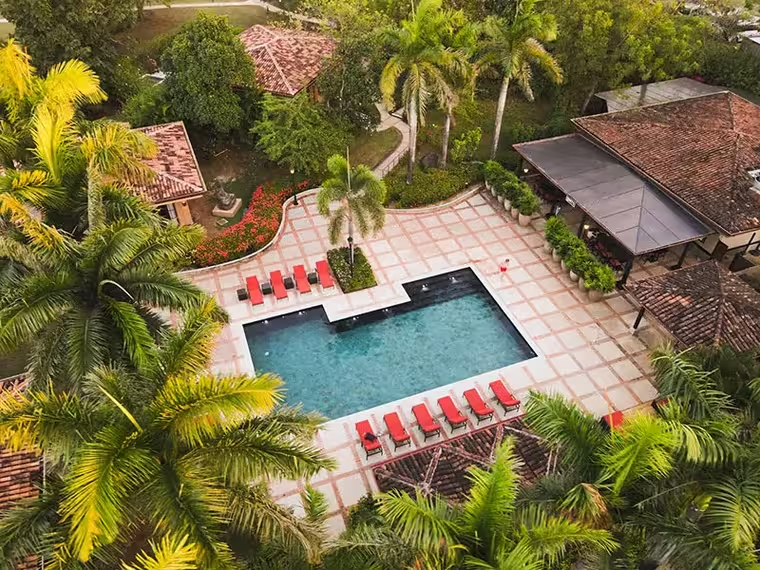What is “Integration” and Why is Everybody Talking About It?


Understanding Integration
Over the last few years, integration has become the ultimate buzzword in the psychedelic community. Everybody is talking about integration, looking for integration, posting about integration, offering integration. We have psychedelic integration coaches, psychedelic integration circles, psychedelic integration courses. Everybody seems to be honing in on integration, yet it seems that we don’t quite know yet what integration really means — or rather, what it can mean for people who live in the sort of societies like we do.
Sometimes, it can be useful to examine the etymological roots of the words that we use. “Integration” is a word that comes to us via the latin noun integratio, which means “renewal” or “restoration”, and also, "to make whole”. The act of “integration”, in short, refers to the act of bringing together the parts of a whole. Interestingly enough, this meaning is similar to that of the word “healing” a word whose etymological roots can be traced back to the proto-germanic word hailjan: to make something whole. Both “integration" and “healing” refer thus to the same process, the process of gathering all the fragments of who we are to make ourselves whole again.
We have seen in previous entries of our blog that attending an ayahuasca retreat can be a transformative experience, and indeed, it often is. The container of the retreat offers the participants the opportunity to disconnect from the daily grind, reflect deeply, and engage in transformative practices aimed at healing and personal growth. Ayahuasca is an incredibly powerful teacher and healer. It can help us understand ourselves better and help us get back into right relation with ourselves, our community and our environment. It can help us dig into our past to work through traumas that are still holding us back, and be an ally in our journey to live more fulfilling lives. Ayahuasca can be immeasurably helpful for those who want to understand the deeper roots of life-diminishing experiences of anxiety and depression.
However, beyond the epiphanies and moments of unmatched clarity we might experience during ceremony, ultimately the true value of an ayahuasca retreat often hinges on the process of integration, which, simply put, involves assimilating the insights and experiences gained into one's everyday life. Integration is the process through which insight becomes lived reality, ideas become routines, intention becomes discipline and visualizations become manifest reality. Integration is crucial for ensuring that the benefits of a retreat are not fleeting but lead to lasting change and tangible, quantifiable improvement in our day to day lived experience.
Integration is the process through which individuals incorporate —embody— the experiences, insights, and lessons lived during the retreat back into their daily lives. One thing is to experience that precious and blissful experience of ecstatic joy in the maloka, bathed in beautiful sounds and surrounded by skilled, empathic facilitators and co-participants. A very different thing, however, is to be back home a few days later, sitting in stagnant traffic on the I-5, feeling how all the peace, compassion and clarity slips though our fingers or evaporates in the hustle and bustle of busy —and often exasperating— urban life. But the truth is that real life does not happen inside a maloka — at least not all the time. For the most part, life happens precisely on that highway, in those moments when our patience is stretched to the limit, our empathy tested to the max. Like with any spiritual endeavour, its easier to feel enlightened sitting on top of a mountain — yet at some point we need to climb down and get back to our triggers, stressors, and responsibilities. The point of integration is to improve the ways in which we show up in our day-to-day.
Integration is often understood simply as the process of reflecting on what was learned, mostly focused on making sense of the experiences, followed by a plan meant to help us apply these insights in real life. Sometimes we can also set goals; this can help us quantify or measure our development throughout a designated period of time. The integration process can include various practices such as journaling, meditation, therapy, or ongoing support groups. Here, it is really important to understand that no integration plan will work the same for everybody. People have different needs, different temperaments and gravitate towards different practices. Part of the process in itself is process of discovery — a joyous, playful journey of discovery to find the tools, practices and approaches that work best for us.
Dimensions of Integration: The Person as a Whole.
While some things are widely recommended as a good starting point, it doesn’t mean that we need to stick with something that just doesn’t speak to us. Not everybody is going to connect to a particular meditation technique or a specific yoga approach. Luckily, modernity offers us an abundance of teachings, teachers, lineages or methods to choose from. Some people will find joy in the open-ended curiosity of the contemplative vipassana meditation traditions, while other might find comfort in the simplicity and structure of a Mahayana Buddhist shamata meditation. Some people might choose to do away with meditation as a whole! That's okay. There are other contemplative practices that we can try, or we can simply decide that we’d rather find other ways to quiet our minds and find silence and peace. The important thing, in the end, is to make enough space for ourselves in our busy daily grinds, to maintain a practice —whatever practice— that ensures that the retreat experience is not an isolated event but a catalyst for sustainable change.
Integration is also crucial in our journey to develop resilience by reinforcing the lessons learned during the retreat. One thing about life is — life is not always going to be easy, and in fact, more often than not it will be challenging. The ideal of a perfectly healed state where we are forever whole is, unfortunately, more fantasy than reality. Healing and growth is not about avoiding painful or challenging situations — but about learning to navigate those situations more gracefully and with more maturity. This is what we mean by “resilience”: by continually applying new practices and insights, integrating the things that we learn along the way, we can build a stronger foundation to cope with future challenges and stressors. This resilience is essential for maintaining mental and emotional well-being in the long term, in the face of a real and raw human life in a chaotic world.
Another key aspect of integration relates not only to how to maximize benefits but how to minimize risk of backlash. This might not sound like something that most people would want to hear — but its important to be aware that sometimes we might actually feel worse before we actually start feeling better. Retreats can sometimes bring up intense emotions and unresolved issues. This is, after all, really the point of going to a retreat in the first place. We want to go deep into stuff that might bring up uncomfortable or painful experiences that need to be dealt with. Without properly processing and integrating these intense emotions, we might come back home feeling too overwhelmed or feeling like we are unable to cope with these revelations as we go about our daily lives. Attention to integration provides a structured approach to processing these emotions, keeping our thought processes in check and reducing the risk of overwhelm —ensuring that the retreat experience leads to truly positive outcomes.
The social dimension of integration is also crucial. This point cannot be overstated: humans heal in relationship with each other. There is a dialectic between individual growth and relational healing, sure. But the relational is often ignored, or at least under appreciated as we go around our own “personal process”. It is particularly important to be aware that the personal growth achieved during a retreat can significantly impact relationships. This is particularly true if we attended a retreat with a partner, spouse, or close family member, and perhaps part of the intention was to work on that relationship to begin with. But this can also be true in cases when only one person has attended the retreat, and is coming back home to the container of the relationship. Sometimes, it can be difficult to know how to communicate the deep, sometimes ineffable experiences that we live during an ayahuasca ceremony — and a retreat as a whole. Being able to bridge that back requires empathy, patience and leveling up our communication skills. The prize, of course, is deeper connections with our significant others and loved ones. Learning how to fruitfully communicate the things worth sharing allows us to share those experiences constructively while hopefully applying any new interpersonal skills we might have learned during the retreat. In the next section, we will talk a bit more in depth about some common and useful integration practices .
Effective Integration Practices:
Journaling
Writing about the retreat experience, while reflecting on those experiences and weaving together a cohesive and coherent narrative is a powerful way to process the insights and embody the lessons. Journaling can be helpful in articulating our thoughts and feelings, making it easier to understand and integrate them into our lives. Furthermore, the mere act of writing —particularly handwriting— adds value on its own, not only allowing us to slow down, but also, engaging parts of our brain that help us make more synergistic connections and elicit a few more “a-ha!” moments. Of course, journaling also sparks our memory and lubricates our cognitive engines, while serving as a record that can be revisited in the future, both to reinforce lessons and to track progress. Few things is life are as satisfying as revisiting old diaries and allowing a sense of accomplishment to wash over us as we realize how far we have come.
Meditation and Mindfulness
We touched on this briefly above— meditative and contemplative practices are really the foundations of a mindful and spiritual life. Developing a meditative practice is the cornerstone —or can be the cornerstone— that allows us to slow down and really listen to that inner guidance. Furthermore, meditation gives us the space that we need to allow insights and lessons to percolate, integrate, assimilate, get thoroughly digested, a long and convoluted process that becomes even harder if we are just rushing around and about. Continuing meditation and mindfulness practices after the retreat has ended can help maintain the sense of peace and clarity achieved, and make sure that the retreat is not just an isolated event in our personal biography but the beginning of a longer, life-long way of being that contributes to our wellbeing and happiness in the long run.
Therapy, counseling and coaching: Working with a skilled therapist, counselor or coach can provide additional support in the integration process. Sometimes, professional guidance can be helpful —or even necessary— as we navigate complex emotions and challenges, ensuring that the retreat experience leads to meaningful and sustainable change. This can be particularly true if we are in a vulnerable moment of our lives or we have a history of trauma or significant mental health challenges. Asking for help is one of the most important things we can do for ourselves, and sometimes this means seeking advice and guidance from the experts.
Support Groups
One of the most meaningful aspects of the retreat is the connections that we make with other participants. More often than not, we will meet people who inspire us and help us be better persons. Joining or forming support groups with fellow retreat participants can help us recreate a sense of community and accountability. Regular meetings or virtual check-ins provide a platform to share experiences, discuss challenges, and support each other in the integration process, to keep the momentum of the retreat going and feel that sense of togetherness that can be crucial as we step into new ways of being. And we live too far from our retreat friends, well, we can still try and find others who can relate. Nowadays, there are plenty of spaces we might find others who are in a similar healing journey — from yoga studios to conscious festivals to online forums. People are out there — its a matter of finding each other!
Setting Intentions and Goals
Setting specific intentions and goals can help us stay focused and motivated. We can gamify our integration a little bit — it helps us assess progress and identify difficulties. Goals should be realistic and actionable, providing a clear path for applying new learnings to everyday life. If our goals are too vague, its easy to get lost in abstraction. If we are able to articulate goals with clarity, its easier to avoid frustration. If we see that we aren’t making as much progress as we’d like, we can take a step back an look at the map. Instead of becoming self-judgmental, we can be curious about our own path, and see where and how we can do better.
Common Challenges and How to Navigate Them
Despite its importance, integration can be challenging. To paraphrase a well known quote, in a different context — We don’t do integration because its easy; we do integration because its hard. In fact, changing deeply rooted habits and ways of being while incorporating new practices and developing discipline may be be one of the hardest things we can ever do. Although it may sound like a cliche, change does not come easy, nor does it come fast. We may fail a few times before we get it right, and thats okay. The important thing is not to immediacy succeed in every integration goal that we set for ourselves — but rather, to make sure that we get up, shake the dust, and try again. Perseverance is the key, and self-compassion and patience the tools to get there. Still, there’s a few obstacles that are common enough to merit a special mention, so we know what to look out for.
Lack of Time
The busy pace of modern life can make it difficult to find time for reflection and integration practices. A common adage in modern spirituality states, “if you cant prioritize half an hour a day for your personal practice, its a sign that you need to start prioritizing the full hour”. The meaning, of course, is that we need to get out priorities straight, and make sure that we are focusing on the right things — the ones that really have a tangible impact in our quality of life.
Familiarity and Inertia
Returning to the same environment where old habits and stressors are present can hinder the integration process. Its easier to fall back into ways of being that are not serving us anymore in the comfort of the familiar. Shifting a few things around can be useful — without the need to completely uproot our whole life. Move some furniture around, experiment with different schedules, make a point of trying new activities and go out to new places, hang out with new people. You know, get a new haircut.
Community
As a follow up to the previous point: its time to make an honest assessment of our social capital. Are we well supported by friends and family? Are we carving enough time for the relationships that bring meaning into our lives? Are we being generous with our attention and presence? Are we making space for new connections and nurturing the ones that we already have? Without a supportive community or network, we might may find it challenging to stay motivated and accountable as we reach for our goals. If we are feeling lonely, alienated, and lacking support, its time to prioritize our social lives. How and when can we meet new people? What kind of environment or activities might attract the kind of people id like to meet in this point of my life? Meet the others — this point cannot be overstated. Other people are the most important resource we can have.
Wrapping Up
Understanding that integration is a gradual process is the key. Often times, success depends on whether we are able to be kind, patient and compassionate with ourselves during this journey. Change is hard; discipline is hard; overcoming frustration is hard. Beating ourselves too much when we stumble only exacerbates the drive to give up. Being grounded in the reality of our own rhythm can help us through the difficult moments and give us the best we need to push through the goal line. Integration, as we have seen throughout this text, is a vital component of the retreat experience. Integration ensures that the insights and growth achieved are not temporary but lead to lasting change.
Integration ensures that the retreat is not just an isolated positive memory, but a catalyst for deeper, systemic change. By choosing the set of practices that feels good and true to us, we can effectively continue to incorporate the lessons learned into our daily lives, really grounding those wonderful insights into tangible personal growth and well-being. When we do our own work, we inspire other to do theirs; integration is, ultimately, a catalyst for change, not only for ourselves, but the world as a whole.
Take the next step
Ready for your life-changing journey?

Transform Depression with Ayahuasca
Watch this educational webinar to explore the therapeutic potential of Ayahuasca in treating depression with Dr. Jeff McNairy and Dr. Mariana Rojas.
Here's what you'll learn in this discussion:
- How people and their brains get stuck in depression
- How Ayahuasca resets the brain of people dealing with depression
- How the Rythmia Way Program helps people reset their lives





